24 Vintage Photos That Show Life In Japan During The 1900’s
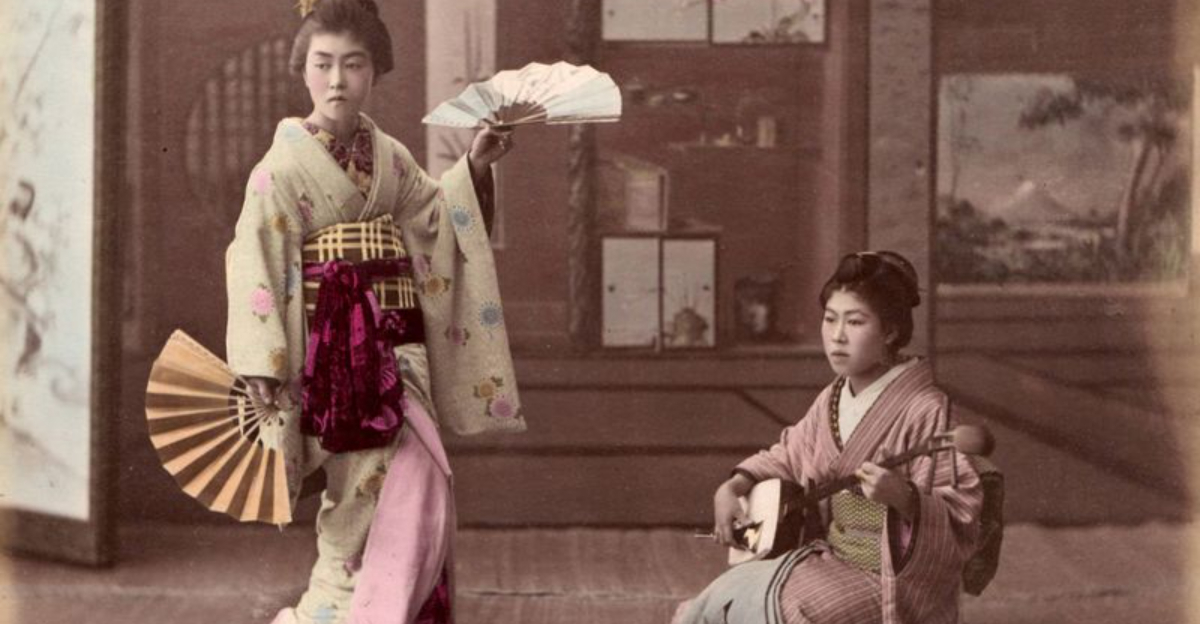
Ah, the 1900s in Japan—a time as richly layered as a kimono and just as poetic, like a haiku penned by a sumo wrestler after a long, thoughtful bath.
Stepping into this era feels like wandering through a dreamscape where cherry blossoms drift through the air and the soft clack of wooden geta echoes down stone-paved streets.
It was a moment when centuries-old traditions gracefully danced with the winds of change—tea houses stood alongside telegraph poles, and samurai spirit lingered in a world edging toward modernity. Through these enchanting vintage photos, we’ll take a whimsical stroll into the heart of Japan from over a century ago.
So pour yourself a warm cup of sake, settle in, and let these timeless images whisk you away to a world of elegance, resilience, and quiet beauty.
1. Tea Ceremony
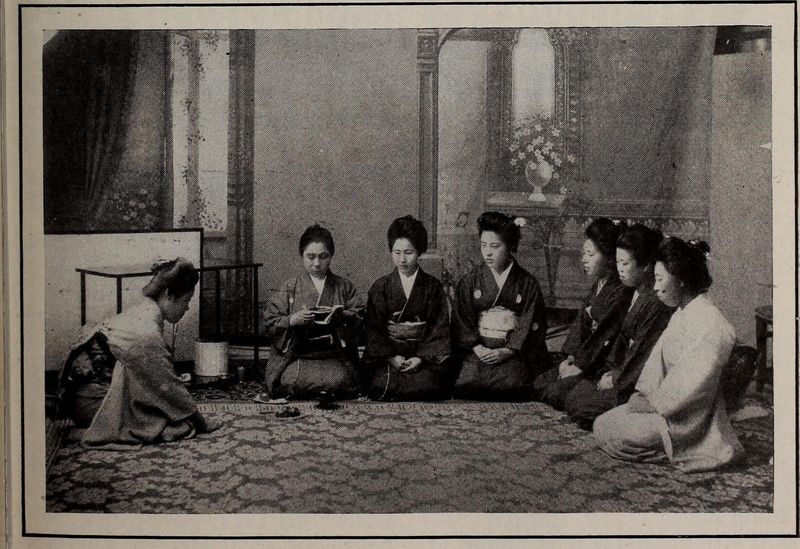
Imagine sipping tea in a ritual so delicate, it’s like participating in a live-action Zen poem. The Japanese tea ceremony of the 1900s was an art form, a dance of etiquette and calmness. I recall attending one myself, feeling like I had entered a sanctuary of peace amidst the chaos of modern life.
Back then, each movement was measured, each sip savored, embodying the Japanese spirit of mindfulness. The ceremony wasn’t just about tea—it was about harmony, respect, purity, and tranquility. It’s fascinating how a simple cup of green tea could be steeped in so much tradition.
2. Kabuki Theater
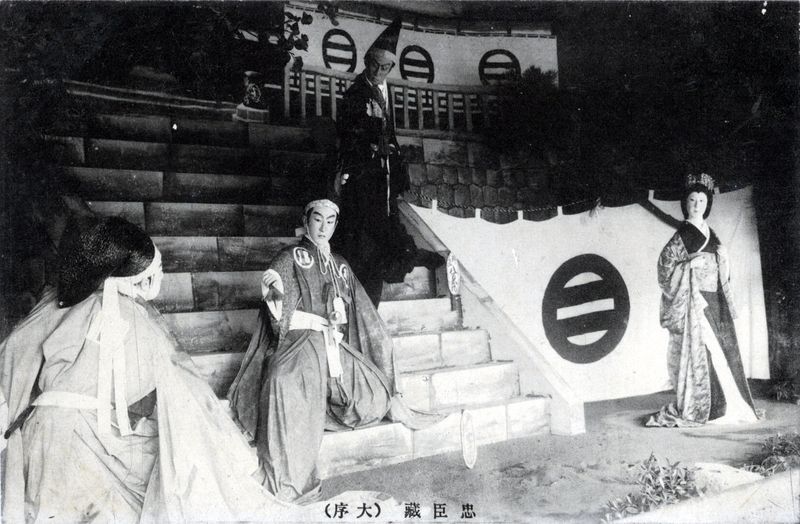
Ah, Kabuki theater—a spectacle that could make even the most stoic samurai crack a smile. With its flamboyant costumes and exaggerated expressions, Kabuki was the 1900s version of a blockbuster hit. I can still remember my first time watching a Kabuki play, where actors transformed the stage into a realm of dramatic enchantment.
The vibrant colors and elaborate makeup weren’t just for show; they were storytelling tools, weaving tales of love, betrayal, and honor. This theatrical style captured the imagination of all who attended, offering a window into Japanese culture.
3. Rickshaw Rides
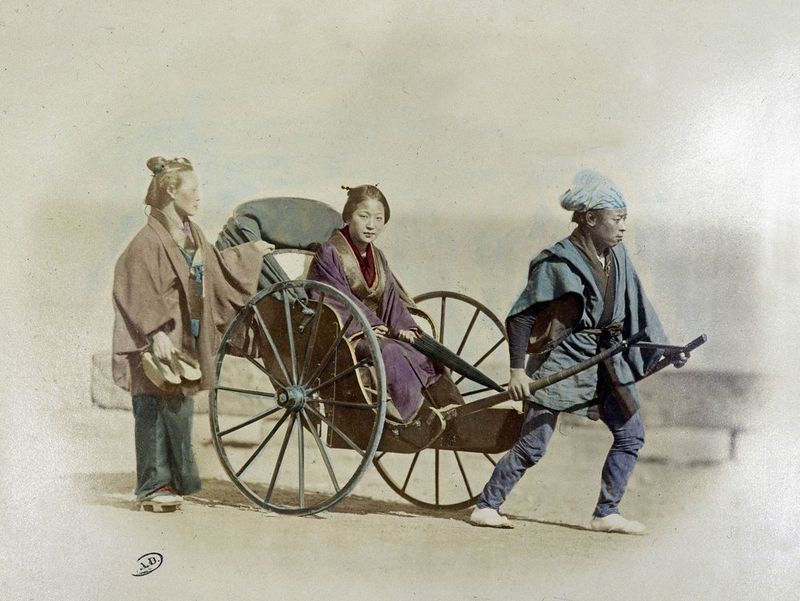
Take a ride in a rickshaw, where the wheels of history quite literally meet the cobblestones of the 1900s. These human-powered vehicles were the Ubers of their time, offering a breezy way to explore the bustling streets of Japan.
I remember imagining myself in one, feeling like a dignified traveler while the city unfolded around me. The rickshaw drivers, with their agility and strength, were the unsung heroes of urban transport.
4. Sumo Wrestling
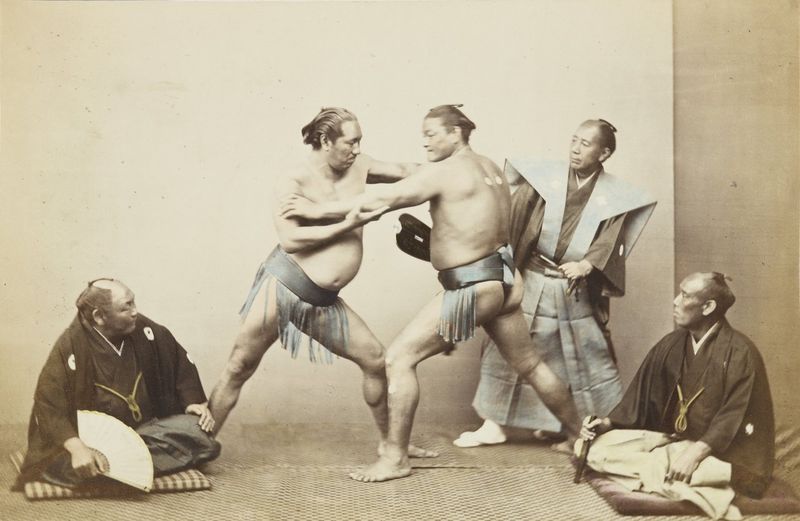
In the ring of sumo, every match was a clash of titans, a testament to strength and tradition. Witnessing a sumo wrestling match in the 1900s was like watching a dance, where every move was calculated yet unpredictable.
The wrestlers, with their massive size and dexterous agility, were icons of Japanese culture and pride. Their rituals, steeped in Shinto beliefs, added a spiritual layer to the sporting event.
5. Kimono Fashion
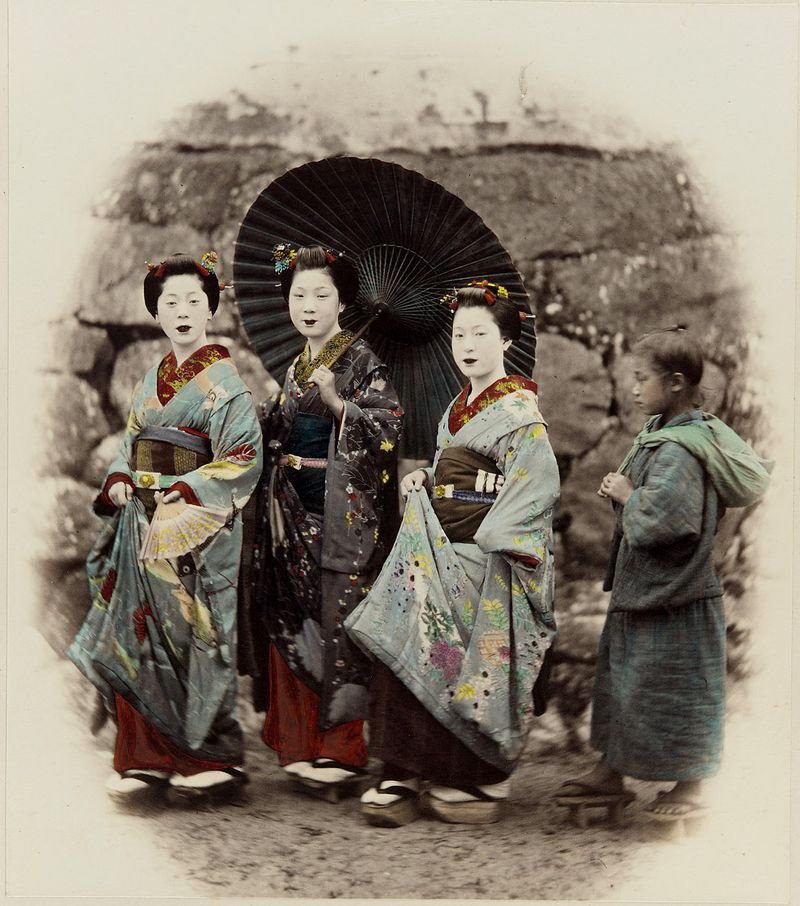
Ah, the kimono—an elegant tapestry of silk and history that turned everyday life into a walking art exhibit. In the 1900s, wearing a kimono was akin to wrapping oneself in centuries of tradition.
I once tried one on, only to realize that elegance demands practice—and perhaps a bit of patience. Each kimono was a story, woven with care and worn with pride, reflecting the wearer’s status and occasion.
6. Cherry Blossom Viewing
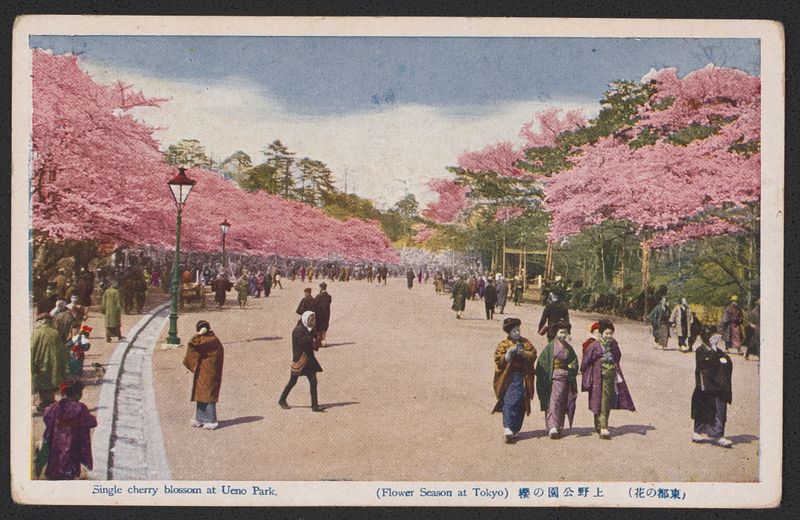
Springtime in Japan, where cherry blossoms fluttered like pink confetti, was a sight to behold. Hanami—the tradition of cherry blossom viewing—was an event that celebrated the fleeting beauty of nature.
I can picture families sitting beneath a cascade of blossoms, enjoying picnics as the petals danced in the breeze. This practice wasn’t just about appreciating flowers; it was a reminder of life’s impermanence.
7. Traditional Japanese Garden

Step into a traditional Japanese garden, and you step into a living poem. In the 1900s, these gardens were crafted with precision, each element symbolizing a piece of nature’s harmony.
I once wandered through such a garden, feeling as though I was traversing a tranquil painting. The sound of water trickling, the sight of koi gliding gracefully, and the scent of pine was a sensory symphony.
8. Geisha Performance
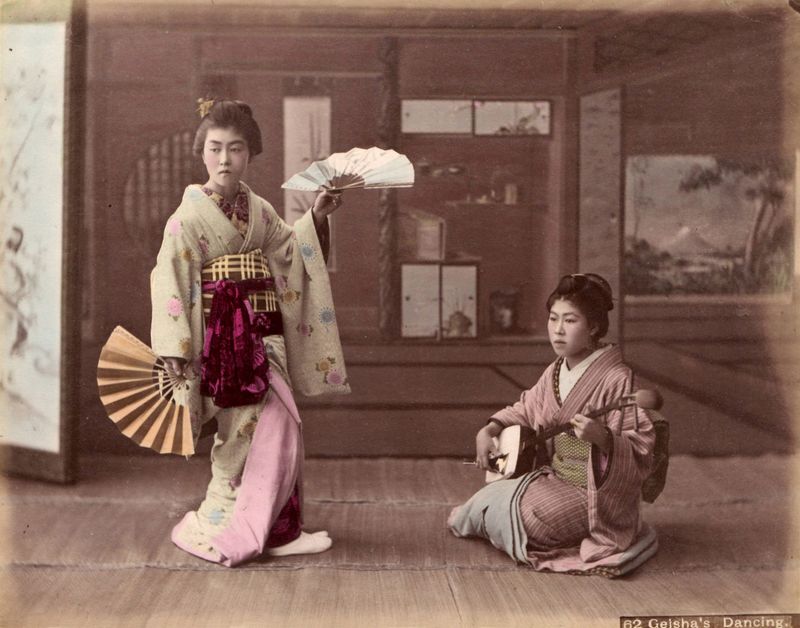
Graceful as a swan on a serene lake, geisha performances in the 1900s were an exquisite display of artistry and culture. These entertainers were masters of their crafts, from dance to music to conversation.
I remember the allure of a geisha’s presence, captivating an audience with elegance and skill. Their white-powdered faces and intricate kimono were as much a part of the performance as the music they played.
9. Samurai Legacy
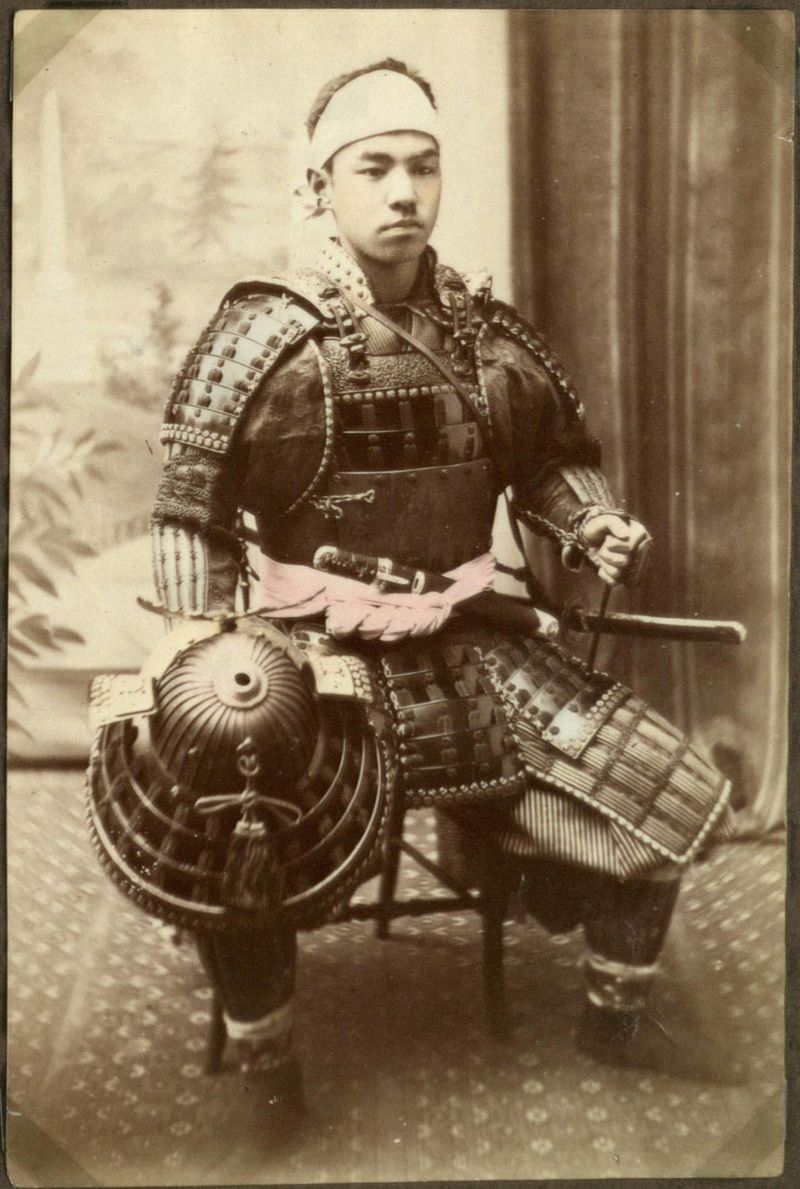
The spirit of the samurai, with their code of Bushido, lingered like a watchful guardian over Japan in the 1900s. Though the era of samurai had ended, their influence was still felt in the culture and values of the time.
I can imagine walking past a gathering of men, their discussions punctuated by tales of valor and honor. Samurai were not just warriors—they were poets, scholars, and philosophers.
10. Street Markets
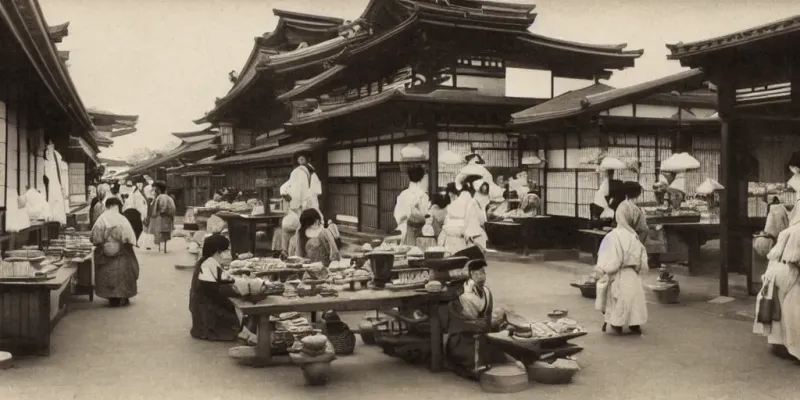
Ah, the street markets of the 1900s—where every corner promised an adventure for the senses. Stalls brimmed with vibrant produce, textiles, and trinkets, each vendor a storyteller in their own right.
I remember wandering through such markets, feeling the pulse of the city in the lively exchanges and the air fragrant with spices. These markets were not just places of commerce, but vital hubs of social interaction.
11. Fishing Villages
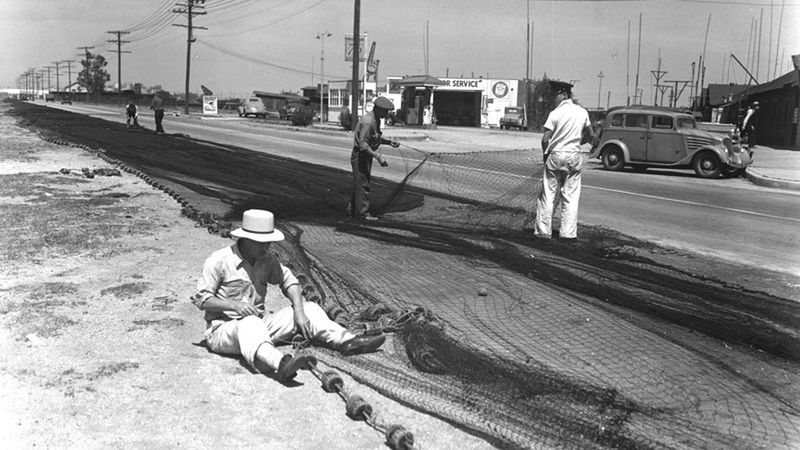
In the 1900s, fishing villages dotted the coastlines like pearls strung along the shore. These communities thrived on the bounty of the sea, their lives intertwined with the rhythms of the tides.
I can imagine the fishermen setting sail at dawn, returning with nets full of shimmering fish. Their way of life was a testament to resilience and harmony with nature.
12. Shinto Shrines
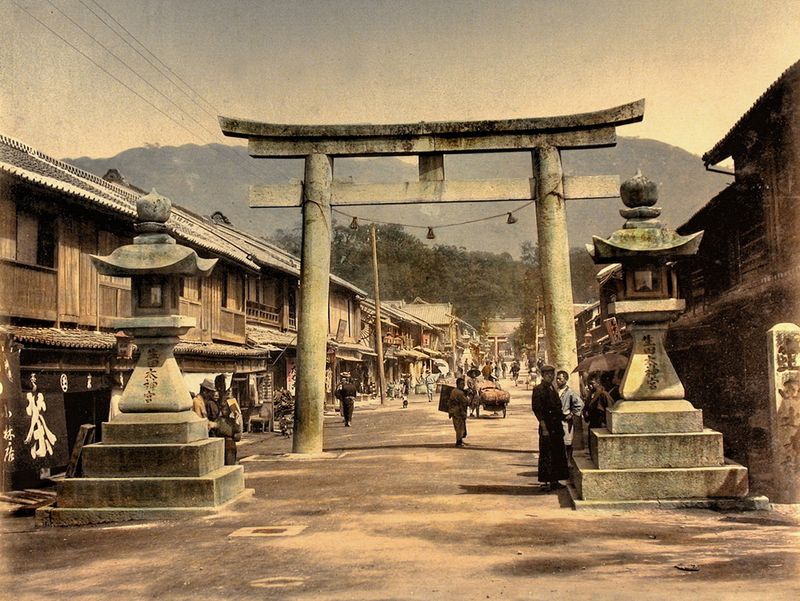
Shinto shrines in the 1900s were sacred spaces where the divine and the mundane intertwined. With their iconic torii gates, these shrines were gateways to spiritual reflection and community gatherings.
I recall feeling a sense of serenity as I walked through the gates, the world outside falling away like autumn leaves. The shrines were not only places of worship but cultural landmarks that echoed Japan’s spiritual heritage.
13. Artisanal Crafts
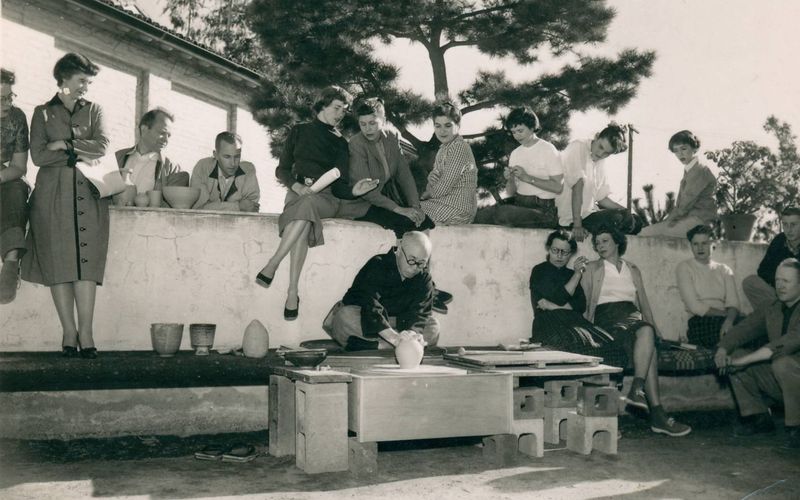
The artisans of the 1900s were the unsung heroes of creativity, their hands molding beauty from clay, wood, and fabric. Each craft was a labor of love, a marriage of skill and tradition passed down through generations.
I can picture an artisan engrossed in their work, the air filled with the scent of freshly carved wood. These crafts weren’t just products—they were stories, woven into the fabric of everyday life.
14. Rice Paddy Fields
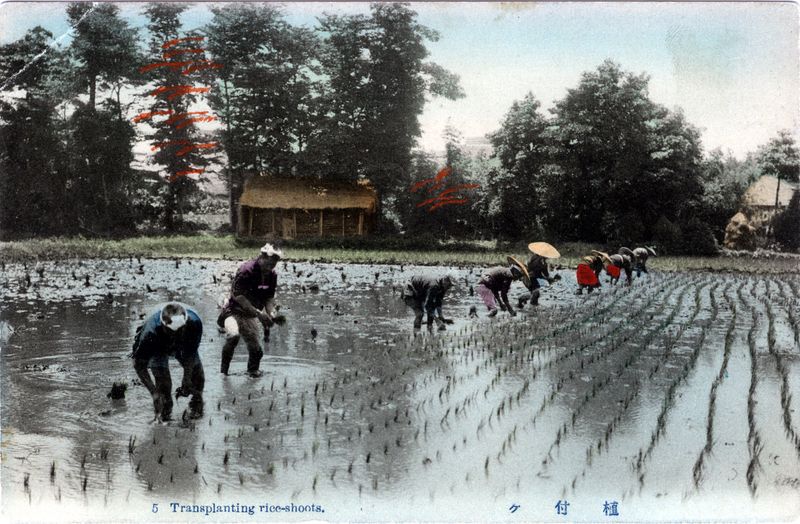
In the lush greens of the rice paddies, life in the 1900s unfolded in rhythmic harmony with the seasons. These fields were the backbone of rural Japan, sustaining communities with their golden harvests.
I can still feel the earth beneath my feet and hear the rustle of stalks in the breeze—an experience that connected the people to the land. Tending the paddies was hard work, but it was also a way of life that nurtured both body and spirit.
15. Bonsai Cultivation

Bonsai—where nature’s grand design was miniaturized into a pot, creating a landscape that fit on a windowsill. Cultivating bonsai in the 1900s was both an art form and a meditation on patience and precision.
I remember watching an artisan shape a bonsai, each snip of the shears a step toward perfection. These tiny trees were masterpieces, embodying the beauty of nature in a form that defied its size.
16. Calligraphy
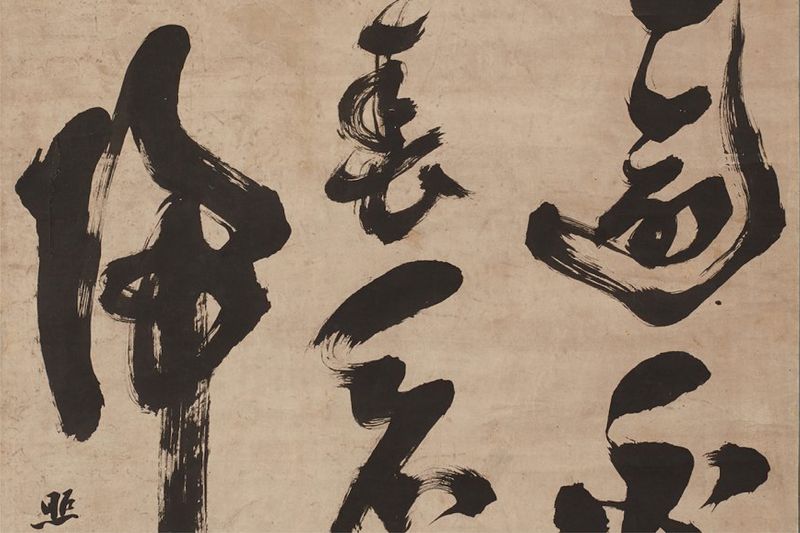
The brush strokes of Japanese calligraphy in the 1900s were akin to poetry written in ink. Each character was more than a word—it was an expression of emotion and philosophy.
I recall trying my hand at calligraphy, the brush feeling like an extension of my thoughts. It was a dance between balance and fluidity, where even the smallest mark carried meaning.
17. Public Baths
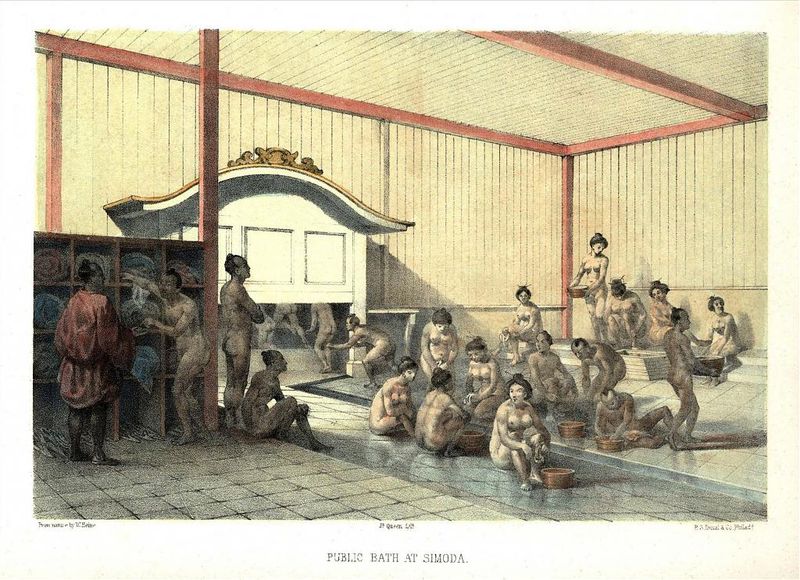
In the 1900s, public baths were the communal heart of Japanese neighborhoods, where the steam rose and so did the sense of community. These bathhouses, or sento, were places of relaxation and socialization.
I remember visiting one, the warmth enveloping me like a hug from an old friend. It was a space where daily stresses dissolved into the water, leaving behind a sense of renewal.
18. Ikebana Flower Arrangement
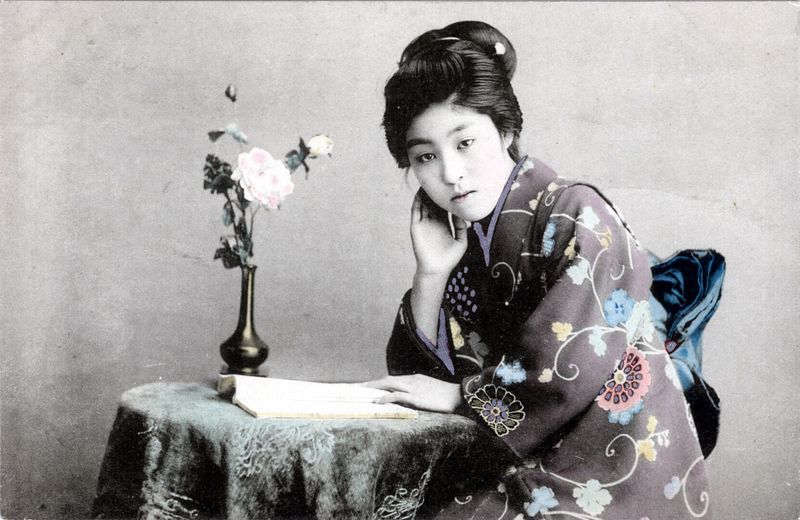
Ikebana, the art of flower arrangement, was more than just placing blooms in a vase—it was a philosophical practice that sought harmony between nature and humanity. In the 1900s, ikebana was a meditative art that celebrated simplicity and elegance.
I once attended an ikebana class, where every cut and placement felt deliberate and meaningful. It was like composing a symphony with flowers, each arrangement telling a story.
19. Traditional Festivals
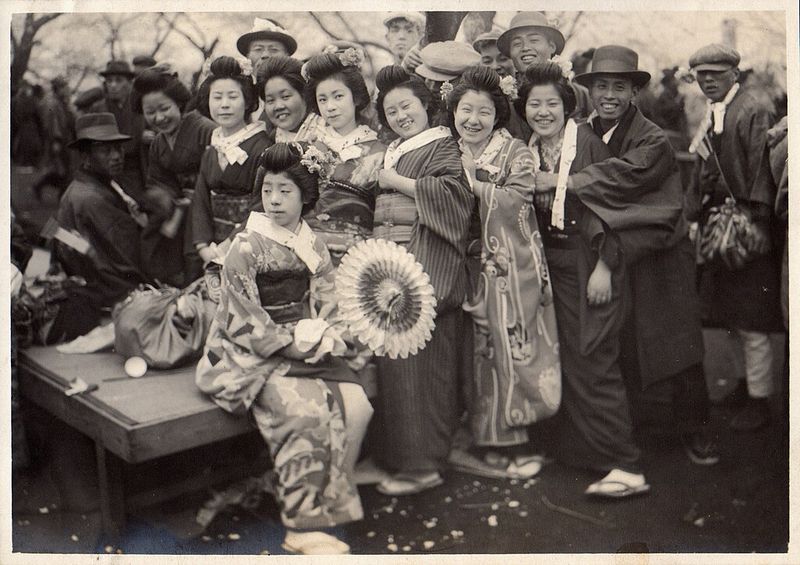
Festivals in the 1900s were vibrant celebrations that lit up the streets with color and joy. These events were a kaleidoscope of culture, with parades, music, and traditional dances.
I remember the thrill of watching performers in elaborate costumes, their movements echoing the beat of drums. Festivals were not just entertainment—they were a tapestry of tradition and community.
20. Miyajima Deer
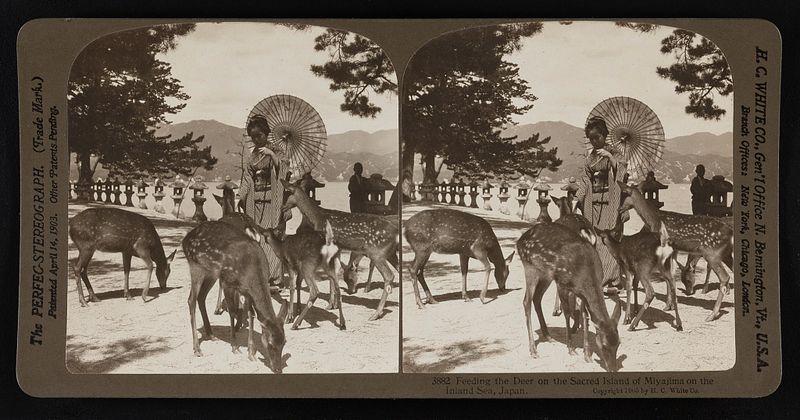
On Miyajima Island, deer roamed as freely as thoughts in a daydream, becoming part of the cultural landscape. In the 1900s, these gentle creatures were considered messengers of the gods, embodying the harmony between humans and nature.
I can still picture the deer wandering among visitors, their presence a serene reminder of nature’s grace. These animals were not just inhabitants—they were cherished companions.
21. Traditional Archery
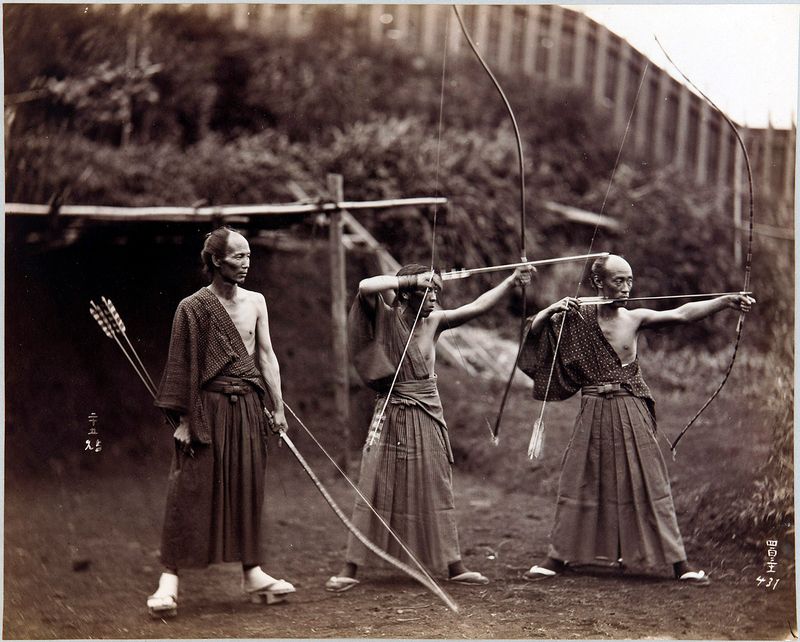
Traditional archery in the 1900s was a blend of sport and spiritual discipline, where each arrow was loosed not just with skill, but with intention. Kyudo, the way of the bow, was a practice that transcended mere target shooting.
I recall watching an archer, their focus so intense it seemed to draw the world into silence. The grace and precision of each movement were mesmerizing, a reflection of inner harmony.
22. Tatami Rooms
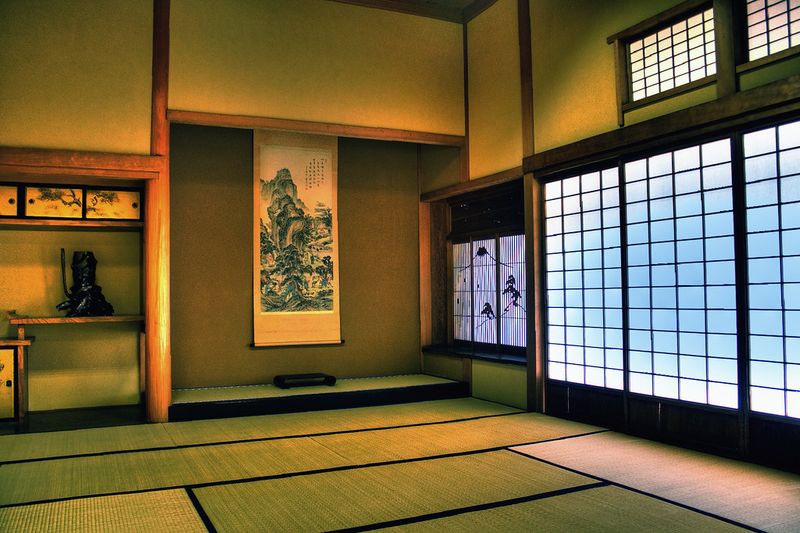
Tatami rooms in the 1900s were the epitome of Japanese aesthetics—simple, serene, and imbued with a sense of peace. These rooms, with their straw mat flooring and sliding doors, were sanctuaries of minimalism.
I remember entering a tatami room, the scent of fresh straw calming my senses. It was a space where life slowed down, encouraging reflection and relaxation.
23. Paper Lanterns
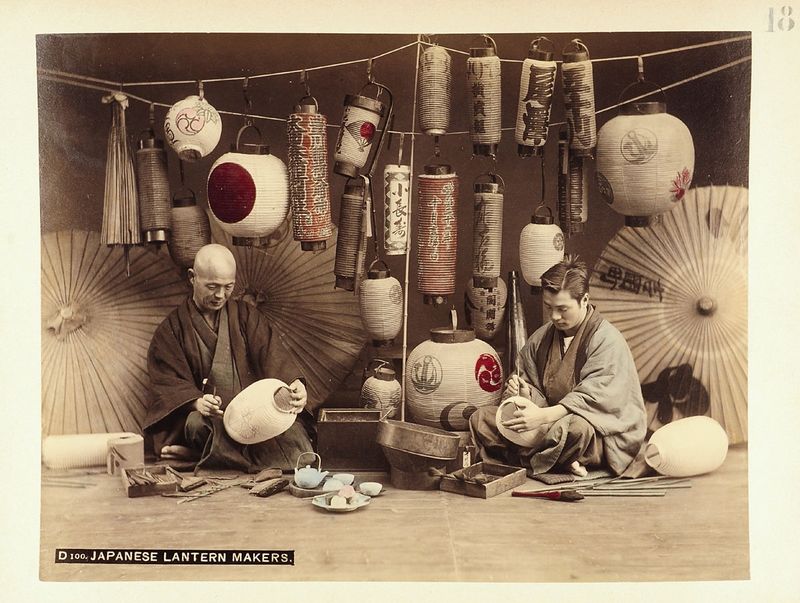
Paper lanterns in the 1900s were like stars that brought the heavens down to earth. These glowing orbs of light were a staple of festivals and street celebrations, casting a warm glow over the revelers.
I remember the magic of seeing lanterns float down the river, each one carrying a wish or a memory. They weren’t just decorations—they were beacons of hope and joy.
24. Ikon Boat Processions
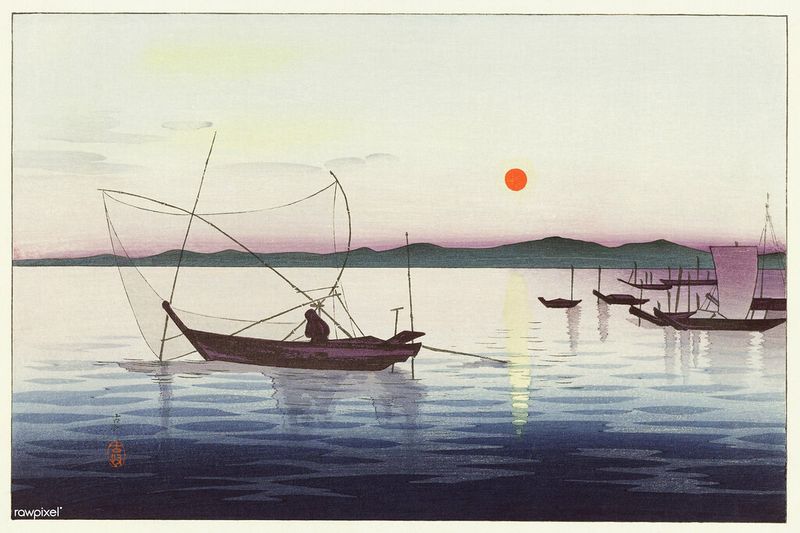
In the 1900s, boat processions were a spectacle of grace and grandeur, where the water became a stage for cultural expression. These processions were vibrant displays of community spirit, with boats adorned like floating works of art.
I can imagine the gentle rocking of the boat, the water reflecting the colorful decorations and the laughter of participants. It was a celebration that flowed with the currents of tradition.
